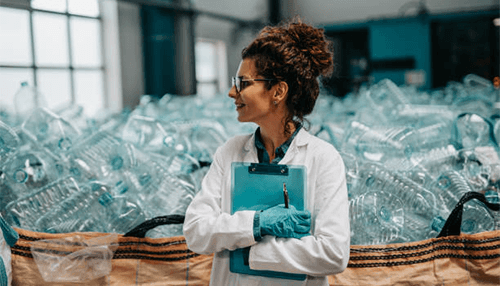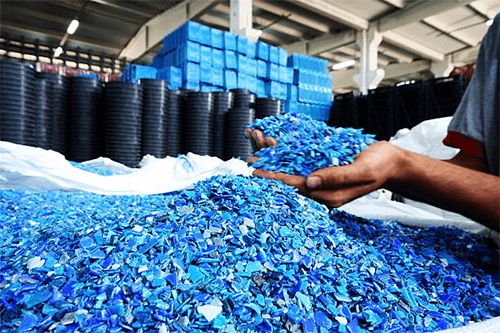Global organizations answer the call for environmental sustainability to maintain ecological balance. They are opting for recyclable and biodegradable materials. The plastic recycling industry is trending on the path to a green planet. The latest recycling news from Canada reports how the plastic recycling sector is using clever waste management techniques to reduce its carbon footprint.
Read on to learn more about the rising trends in the plastic recycling industry.
What is plastic recycling?
According to a recent report, the Canadian plastic recycling market, which stood at 3.08 million tons in 2020, will reach around 4.38 million tons by 2030. It is growing at a healthy CAGR of 3.15 percent until 2030.
The increasing adoption of recycled plastics in various industries has led to this growth in the recycling business.
Plastics have become an indispensable part of human lives. You can see different uses of plastic in soda bottles, ID cards, grocery bags, chairs, tables, toys, boxes, and different packaging goods.
Apart from daily essentials, various industries such as automobiles, manufacturing, construction, and packaging sectors use this specific polymer in a wide range of applications.
Plastic recycling is an essential process to reduce land and water bodies’ pollution from these discarded materials. Also, improper management of this material can increase the need to produce more plastic. It will need additional operational and manufacturing costs.
Each type of plastic polymer has different chemical properties and melts at different temperatures. Compared to other materials, recycling plastic is a challenging task.
The recycling process involves gathering used plastic products and converting them to new, valuable items. It requires more energy, labor, and machinery.
Commonly Recycled Plastics
Most of the plastic items that you use are recyclable. Some commonly recyclable plastic types are:
1. PET: It is a thin thermoplastic material mainly used for making soft drink bottles and clothing fibers.
2. PVC: It is a popular synthetic material used to make wires, pipes, and cling films.
3. HPDE: It is a flexible thermoplastic material that is used in the production of gallons and pipes.
4. LDPE: It is not an accessible material to recycle and is used in making sturdy reusable plastic bags.
5. PS and PP: These are polymer materials used to make plastic bottles, cutleries, furniture, foam food containers, and soft drinks bottle caps.
Here are a few trends used by the plastic recycling industry.
Developing Efficient Materials
Automobiles, construction, and healthcare organizations are making lightweight, energy-efficient, and corrosion-resistant plastics at minimum production costs.
Companies are improving methods to reduce waste of raw materials and resources, following the rules of the circular economy.
Using Plastic Waste as a Raw Material
Organizations are adapting mechanical or chemical recycling processes to use disposed plastics as raw materials. Nowadays, many companies in the UK, like Raw Tech, will have to deal with various plastic raw materials.
In the mechanical recycling process, companies turn used polymers into pellets called post-consumer recycled plastic (PCR). Companies add these as additives to different items, like 100 percent recycled PET bottles and plastic gallons made with 95 percent HDPE. Mechanical recycling is a cheaper way to reprocess plastic.
According to a McKinsey report, the LDPE and HDPE mechanical recycling methods can generate the most significant profit pool through 2030.
During the chemical recycling process, companies convert waste plastic into gas or liquid. This process, called pyrolysis, changes the chemical composition of the material to reuse it in a better way.
Ramp up Waste Collection and Management
Most global countries lack the proper infrastructure for plastic waste collection and sortation. As plastics differ in size, color, thickness, and material, sorting them according to their chemical composition is essential for a seamless recycling process.
Increase Production of Biodegradable Plastics
Increasing the production of bioplastics can reduce land and air pollution caused by these polymers. Manufacturers make biodegradable plastics from raw materials that living organisms can quickly decompose.
Companies produce traditional plastic as a non-renewable polymer from fossil crude oil, coal, or natural gas. Bioplastics can contaminate the recycling process. Hence, it is essential to sort them into a well-managed waste system.
Improving Recyclable Qualities
Effective consumer management and production systems can help enhance the recyclability of plastics. Companies are developing mono-material plastic products that can simplify the recycling process of these polymers.
Final Thoughts
Plastic production uses fewer resources and has significantly lower impact on the environment. You can read recycling news to learn how leading plastic manufacturers in the world are coming up with innovative recycling techniques to save land and marine life.
Plastic recycling can bring in additional income for both government and private organizations. It helps maintain the ecological balance as it doesn’t release harmful gases and carbon dioxide into the atmosphere.



